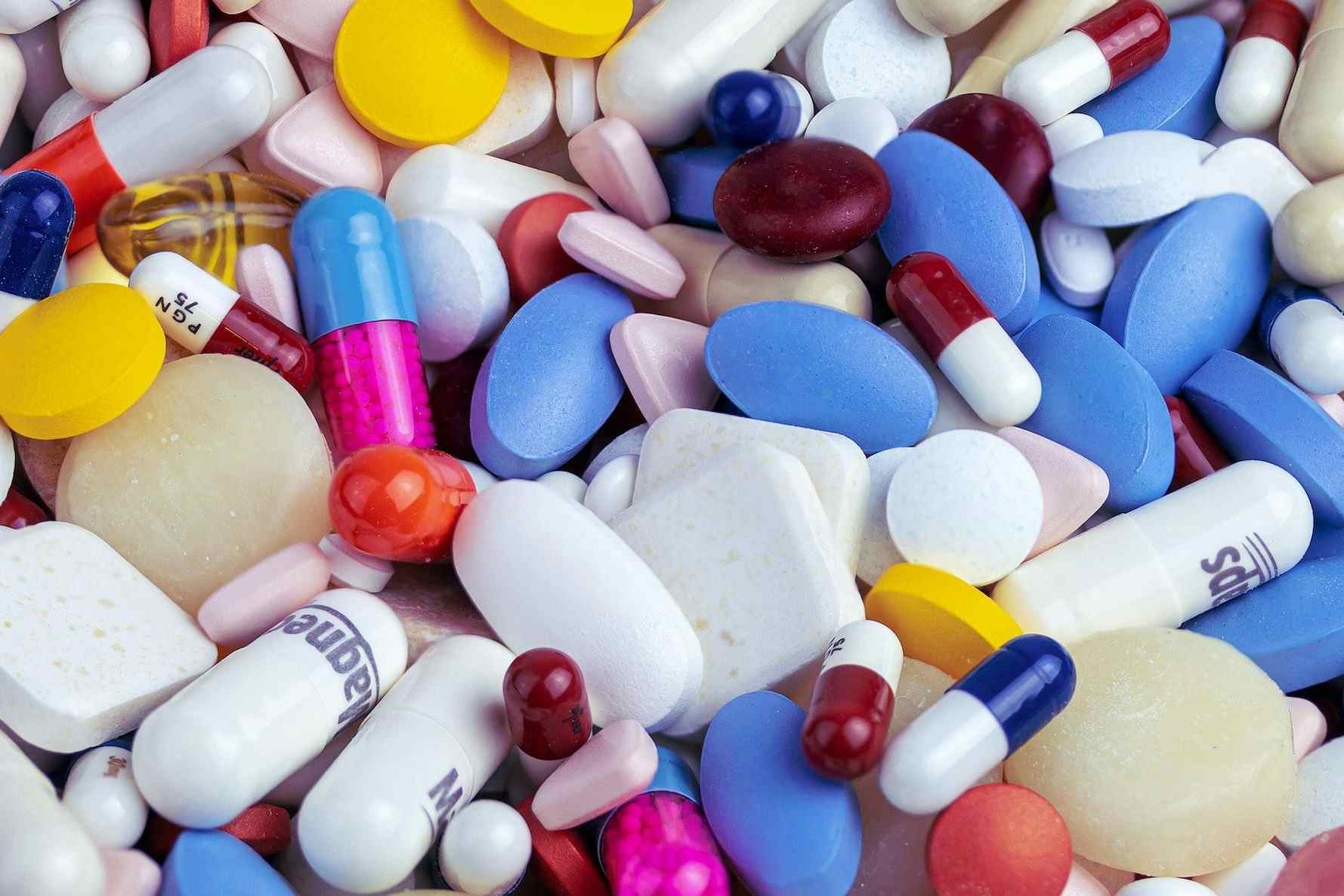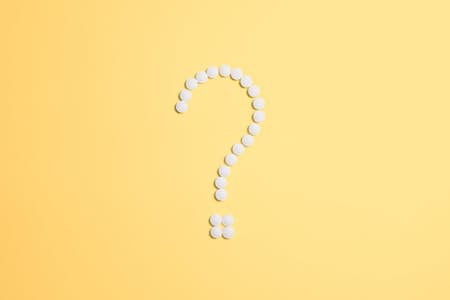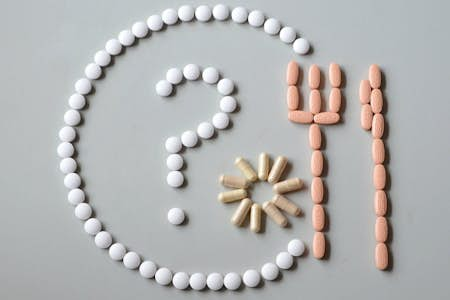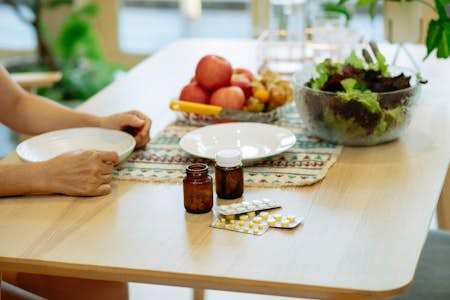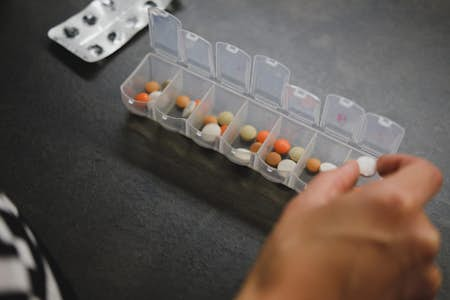There are no specific foods to avoid while taking nitrofurantoin macrodantin. However, certain lifestyle choices can help you improve the efficiency of this medication and avoid any future infections.
There are also some vital medication interactions to consider before starting a course of nitrofurantoin macrodantin, and you may need a different antibiotic if you have certain underlying medical conditions.
You might better know this medication by its brand name Macrodantin, prescribed to treat urinary tract infections in patients of all ages. To avoid confusion and ensure consistency, we will refer to this medication as nitrofurantoin throughout the rest of the article.
Read about what to avoid while taking this medication to stay safe and eliminate infections.
Whether you're looking for the latest vitamins and supplements, want to stock up on over the counter medication, or are looking for a digital solution for your regular prescription, our providers have you covered. Compare brands below and click on your favourite to shop their best offers now!
What is nitrofurantoin?
Nitrofurantoin is a common antibiotic that treats urinary tract infections in adults and children over three months old.
A urinary tract infection is an infection that affects areas such as the kidneys, bladder or urethra, causing symptoms such as a burning sensation when urinating, pelvic pain and tiredness.
This medication is one of the most effective UTI treatments, as the body quickly filters it out of the blood and into the urine. It then targets and kills bacteria in the kidneys and urinary system, removing the infection.
Nitrofurantoin comes in various forms, including Furadantin, Macrodantin and Macrobid. It is possible to take it as tablets, capsules, prolonged-release capsules or as an oral suspension.
This medication is not available over the counter.
As with any antibiotic, it is vital to finish a course of nitrofurantoin, even if symptoms appear to have gone.
Make sure to space out doses of nitrofurantoin throughout the day and take any missed doses as soon as possible. However, if it is nearly time for your next dose, skip the missed dose, as taking two doses of this medication simultaneously is dangerous.
Side effects of nitrofurantoin
There are several common side effects of nitrofurantoin. These include:
- Vomiting
- Nausea
- Diarrhoea
- Headaches
- Abdominal pain
- Dizziness
You may also experience a loss of appetite. In addition, nitrofurantoin turns urine dark yellow or brown; this is normal, and you should not stop taking the antibiotic unless a healthcare practitioner instructs you.
In some cases, you might experience an increase in body weight while taking nitrofurantoin.
There are also a few very rare side effects that affect some patients. For example, if a cough or high temperature develops, you should seek advice from a healthcare professional, as this could be related to lung problems.
A yellowing of the whites of your eyes can also be a sign of liver problems, a rare side effect of this antibiotic.
If you feel chest pains, get medical advice immediately.
Diet and lifestyle
One of the main side effects of taking nitrofurantoin is gastrointestinal issues and nausea, so it is essential to look after your stomach while taking this medication.
Take this prescription after a meal to improve absorption and prevent stomach upset. Avoid spicy foods to reduce gastrointestinal side effects.
As an antibiotic, nitrofurantoin is responsible for killing bacteria in the body. Unfortunately, this can often include healthy bacteria, so it is crucial to build up beneficial bacteria after a course of nitrofurantoin.
Probiotics are a fantastic way to reinstate healthy bacteria. These are live microorganisms found in foods such as yoghurt, which can help keep a good number of healthy bacteria in the gut after taking antibiotics.
It is also essential to understand how to prevent future bladder infections or cystitis after taking nitrofurantoin. Make sure to go to the toilet as soon as you need to urinate and stay hydrated after finishing your nitrofurantoin prescription.
You should also avoid using a contraceptive diaphragm and choose a different form of contraception to prevent any future infections.
Grapefruit can often affect antibiotics such as nitrofurantoin. This is because grapefruit blocks the enzymes in the intestines that break down antibiotics, meaning the medication stays in your body longer than necessary.
This can exacerbate any side effects of the medication. However, unlike other medications, there was no found interaction between grapefruit and nitrofurantoin macrocrystalline.
Who can’t take nitrofurantoin?
It is essential to check if you can take nitrofurantoin before starting the prescription, as every patient is different.
Those with severe kidney disease cannot take nitrofurantoin, and a healthcare provider will choose a different antibiotic to fight the infection.
You also cannot take this medication if you have diabetes, anaemia or a vitamin B deficiency.
Those who have experienced an allergic reaction in the past should seek medical advice before starting a Macrodantin prescription.
Pregnant women can take nitrofurantoin but should avoid it during the third trimester as it can cause issues with the baby's red blood cells.
Breastfeeding mothers can also take this medication, but only if a doctor confirms that the baby will be unaffected by the prescription. For example, children with jaundice or glucose-6-phosphate-dehydrogenase (G6PD) deficiency are at risk from nitrofurantoin.
Medication interactions with nitrofurantoin
There are several drug interactions to understand before taking nitrofurantoin. In particular, avoid medication that treats indigestion, also known as antacids.
This is because these drugs can reduce the absorption of nitrofurantoin, especially if they contain magnesium trisilicate.
It is also vital to avoid quinolones, another kind of antibiotic. These include medications such as nalidixic acid, ofloxacin and moxifloxacin.
Drugs called probenecid and sulfinpyrazone reduce the concentration of nitrofurantoin in the urinary system, reducing its efficiency in fighting bacterial infections in this area of the body.
These medications can increase the risk of toxicity from nitrofurantoin, so discussing your current medication plan with a doctor before starting a prescription is essential.
Nitrofurantoin can also interact with calcium citrate.
Understanding how to safely take nitrofurantoin
Nitrofurantoin is an effective and useful medication for those with a urinary tract infection.
Although there are no specific foods to avoid while taking this medication, as with any antibiotic, it is vital to understand how to populate the gut with positive, healthy bacteria and look after your stomach.
By taking this medication with food, you can avoid or reduce nausea. It is also critical to take the whole course of antibiotics, to prevent another bacterial infection.
There are several medication interactions to consider before taking this drug, including antacids and probenecid.
Discuss any concerns with your doctor before starting a nitrofurantoin prescription, especially if you have any pre-existing health conditions such as kidney disease or diabetes.

